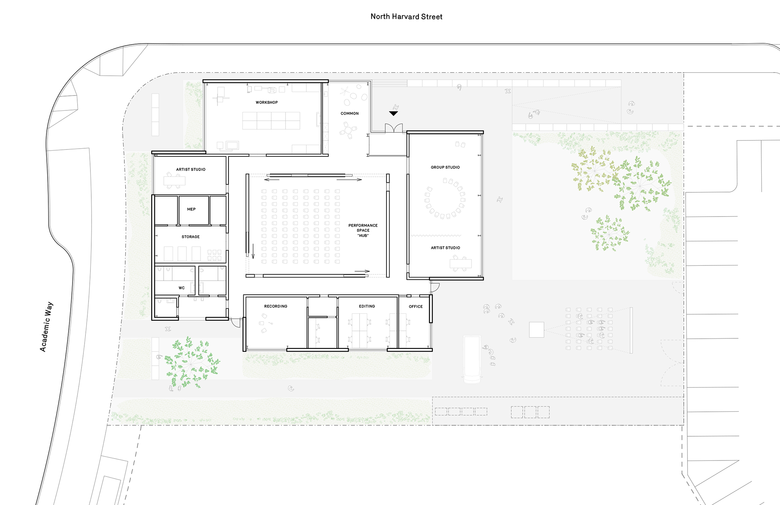U.S. Building of the Week
Harvard ArtLab, Cambridge
Barkow Leibinger
1. July 2019
Photo: Iwan Baan
If a first glance of the ArtLab on Harvard University's expanding Allston campus gives the impression of ephemerality, that is no accident. It was designed by Barkow Leibinger to be temporary and speedy to erect in response to the area's rapid evolution. The architects answered a few questions about the building.
Location: Allston, Massachusetts, USA
Client: Harvard University
Architect: Barkow Leibinger, Berlin
- Design Principals: Frank Barkow, Regine Leibinger
- Project Manager: Martina Bauer
- Project Team: Sebastian Awick, Johannes Beck, Jordan Berta, Sophia Hannekum
Structural Engineer: Werner Sobek, New York
Structural Engineer of Record: RSE Associates Inc., Watertown, MA
MEP/FP Engineer: BR+A, Boston
Landscape Architect: michael boucher landscape architecture, Freeport, ME
Lighting Designer: LAM PARTNERS, Cambridge, MA
General Contractor: Lee Kennedy Co. Inc., Quincy, MA
AV /IT /Security /Acoustics: Acentech, Cambridge
Graphic Design Signage: Zak Group, London
Code Consultant: Howe Consulting, Norwell, MA
Building Area: 9,000 sf
Photo: Iwan Baan
What were the circumstances of receiving the commission for this project?Harvard organized an RFQ/RFP process to seek an appropriate design team for the ArtLab. After an initial RFQ (Request for Qualifications) phase, the remaining teams produced a proposal intended to expand upon their body of work, team structure, proposed working structure with the client and local community, and show a "design direction." This portion of the presentation included a design narrative, references, functional diagrams, and atmospheric sketches. Barkow Leibinger's team promoted intense collaboration with all stakeholders as well as an ultra-light, efficient, adaptable design strategy.
Photo: Iwan Baan
What are the main ideas and inspirations influencing the design of the building?Harvard University’s ArtLab is a cross-curriculum space for the arts. The expressed ambition of the ArtLab and its programming were to be an interdisciplinary and community "bridge," a building for encounter between Harvard and Cambridge’s dispersed art locations. An assemblage of studios and workshops rotates like a pinwheel around a central Hub space. The ensuing structure embraces this continuity of function between permeable, different-height volumes as well as a glowing polycarbonate skin. The Hub, which can be opened and closed by a series of four large sliding partitions, enables performances and exhibitions, cultivating interactivity at the ArtLab’s center.
Photo: Iwan Baan
How does the design respond to the unique qualities of the site?The location of the ArtLab is at a juncture between Harvard's old campus across the Charles river, its burgeoning new campus, and the Allston neighborhood. The lightness of the façade and industrial character of the construction create a beacon and waypoint, a tool for diverse users to manipulate. Because the surrounding site is rapidly developing, the construction was required to be temporary, ultra-light, and sustainable.
Photo: Iwan Baan
Was the project influenced by any trends in energy-conservation, construction, or design?Harvard has committed to net-zero building methodologies. In addition to being demountable for re-construction elsewhere, the project is projected to be zero net and energy is supplemented by rooftop photovoltaic panels.
Photo: Iwan Baan
What products or materials have contributed to the success of the completed building?Being lightweight and demountable, the building skeleton is made of an optimized steel frame. The building was therefore constructed quickly and delivered on time and on budget. Barkow Leibinger and Sasaki worked very closely with subcontractors to intensively detail the building envelope. In the façade, the polycarbonate panel’s plastic mixture is unique, made specifically for this project by Sabic to achieve strict insulation requirements. Exploiting the façade’s glowing effect, the large supergraphic signage designed by Zak Group announces the building’s energy and engagement.
Email interview conducted by John Hill.












